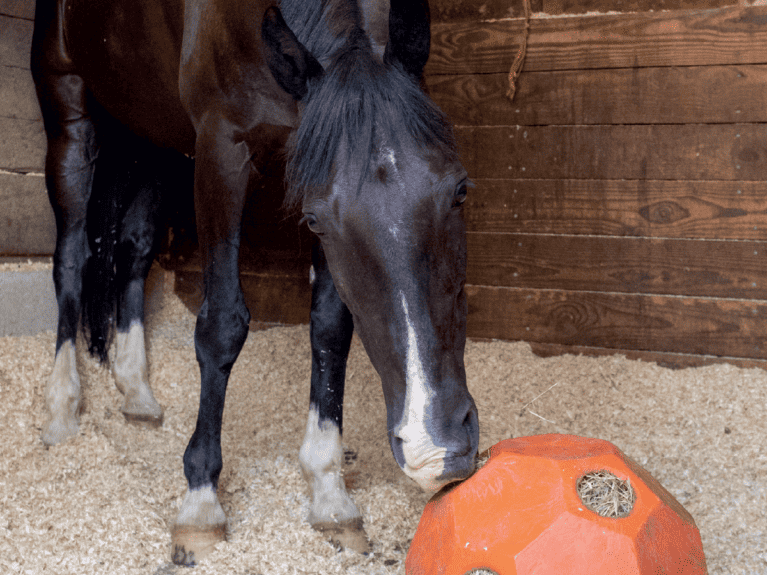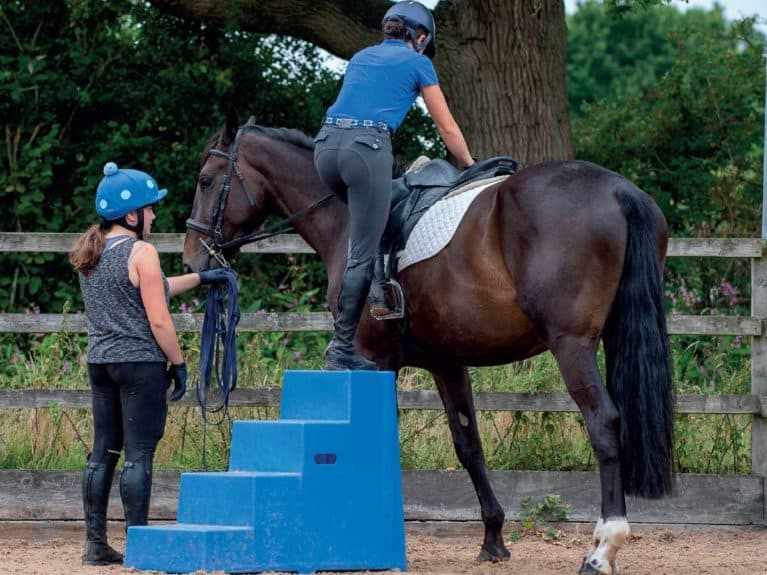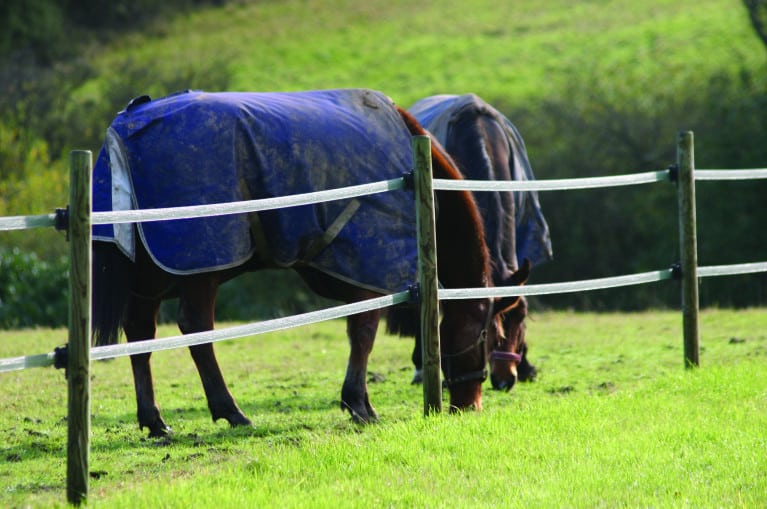

Keeping your horse secure and safe is of utmost importance, and often using electric fencing is the fastest and most cost-effective way to ensure your horse stays put. But knowing which type of fencing and energiser to choose, and understanding how the fence will work best, can be tricky.
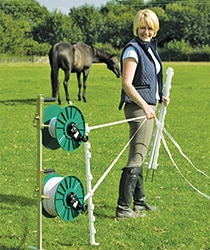
Tape or rope?
When deciding which tape or rope to choose, bear visibility in mind – it’s important your horse can see the fence to be able to avoid it. Both types conduct electricity through metal conductors running along the length, so the more metal they contain, the more efficient the fence will be.
- Tape comes in different widths, so is more visible, but moving it around a lot can break the metal conductors, so it’s better used for semi-permanent fencing.
- Rope is very durable as the conductors are better protected, so is often better for moveable fencing such as strip grazing.
Insulators can be used to attach the tape or rope to the fence post. If you’re using wooden posts, it’s important not to wrap it round them, as you will lose power through the post.
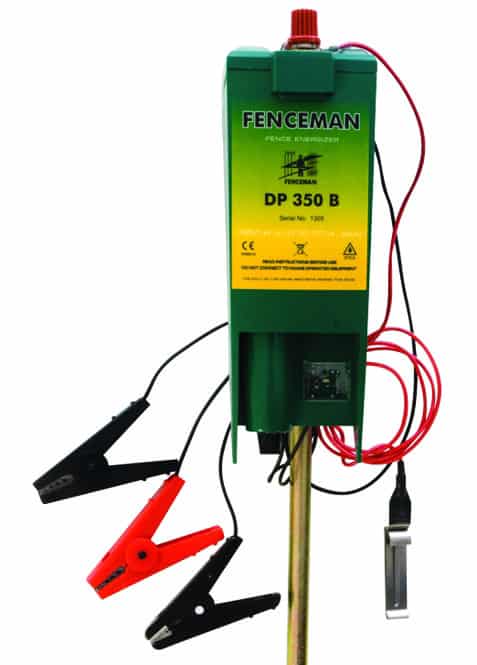
Which energiser?
Energisers often have a joule rating, which refers to the level of electricity the energiser will pulse through the fence – a higher joule rating will give a stronger, more consistent pulse.
The length of the fence determines how high a rating you will need – higher rates will push the electricity further, but will also deplete a battery faster. In ideal conditions, an output of 0.15 joules will power approximately one mile of a single strand of fencing, whereas an output of one joule will power up to eight miles. However, it’s important to have a high enough rating that even if there are branches or undergrowth touching the fence (all of which will draw power away), it will still have enough charge to give a jolt when it’s touched.
Down to earth
Earthing the fence with earth stakes is really important to ensure that the current is working to its full capacity – without it, the shock the fence produces will be significantly reduced. To work effectively, the current needs to complete a full circuit – the current goes from the energiser to the fence, then when the horse touches it the current goes through the horse, into the ground and back to the energiser via the earthing system.
Earth stakes need to be put into the ground, ideally at least a metre deep. The stakes need to be set into damp soil for the system to be effective, so in the summer when the ground is dry, they may need to be deeper, where there is more moisture.

